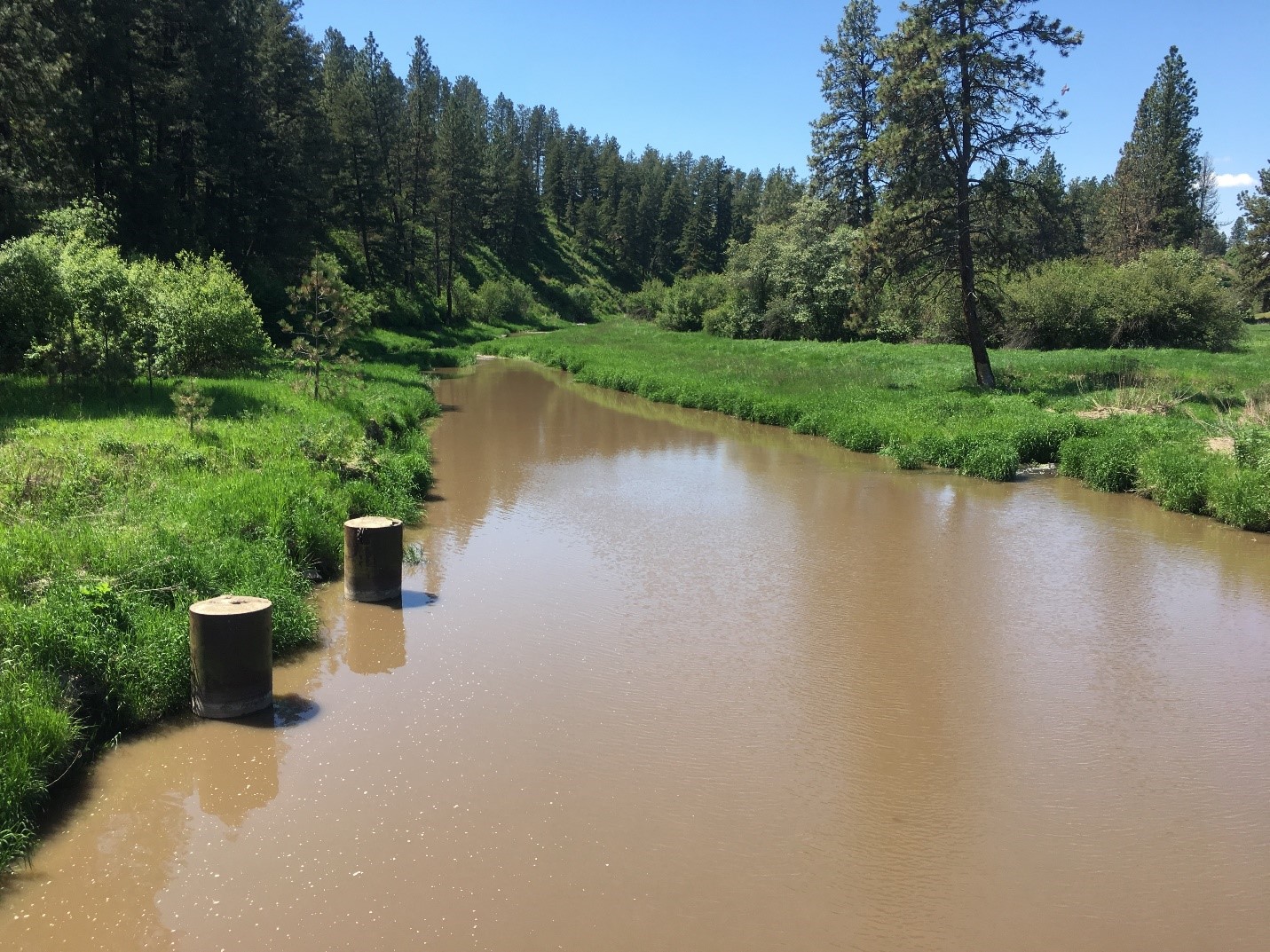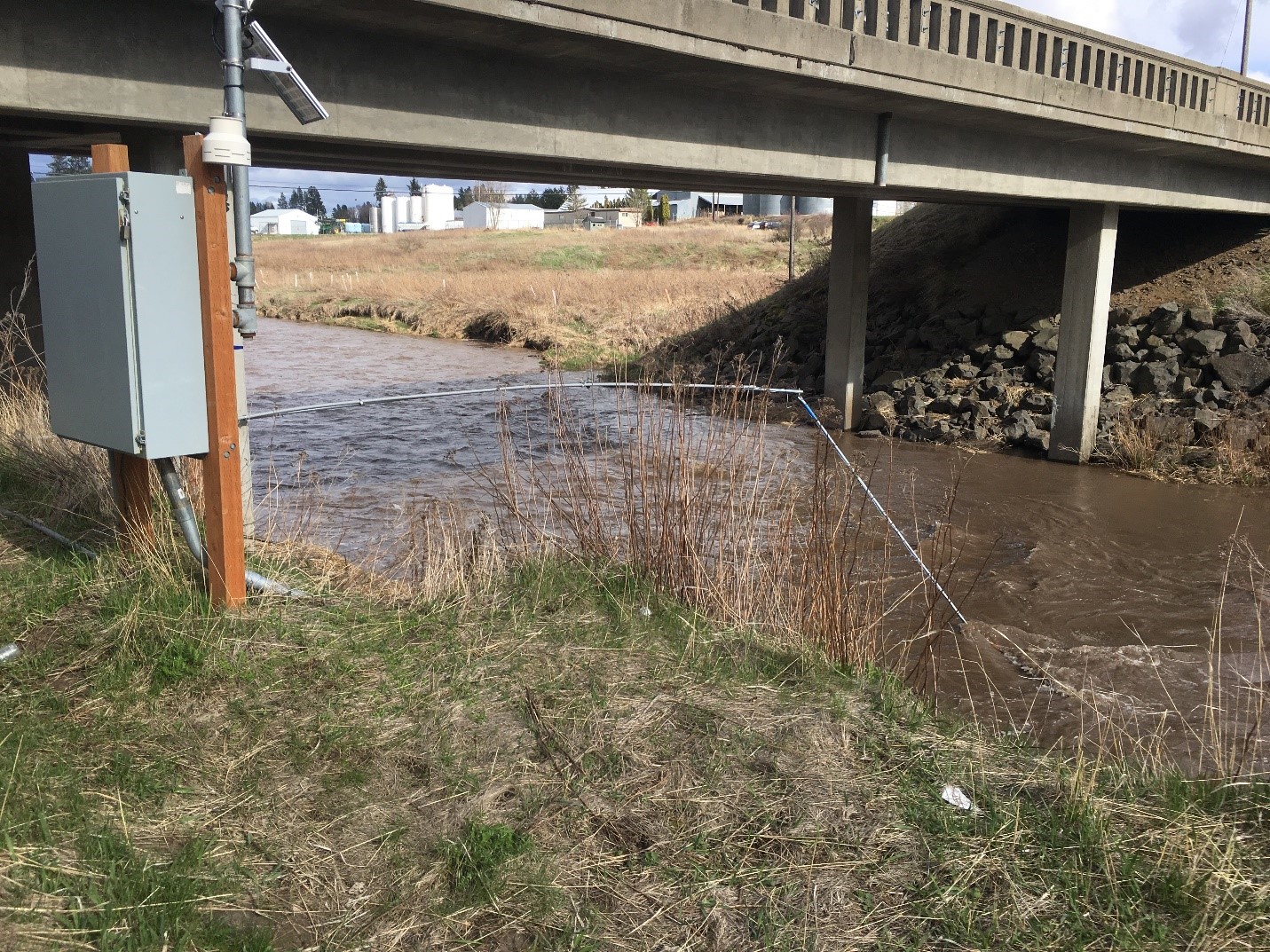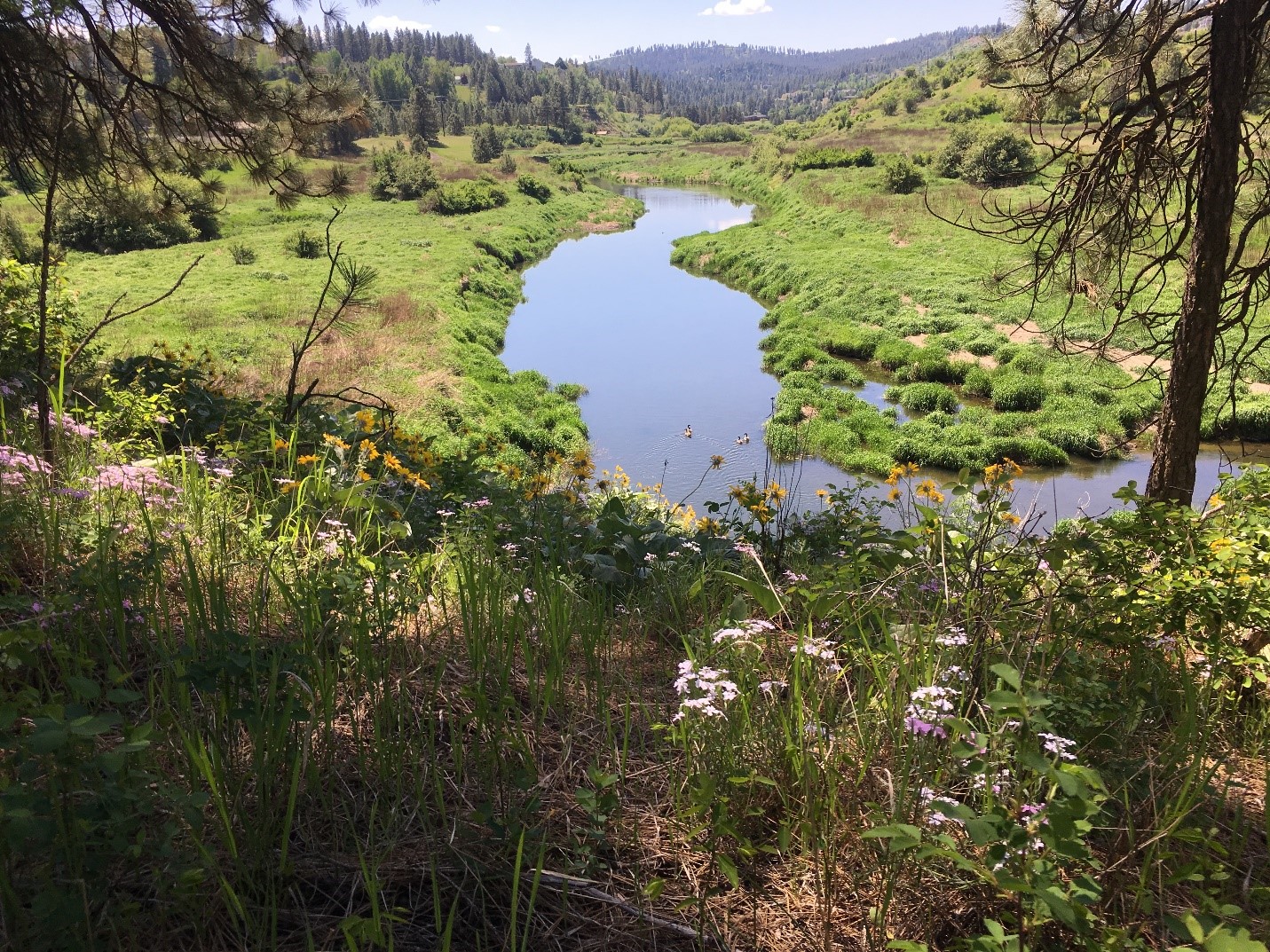
Brown water flows from Hangman Creek into Spokane River.
During late winter and springtime, brown water flows from Hangman Creek into the Spokane River. These flows contain large amounts of sediment and excess nutrients. When this occurs, it’s easy to see why streams in the Hangman Creek Watershed do not meet clean water standards and negatively impact the Spokane River.
To further understand the water quality issues, we performed a pollutant source assessment in 2018. The study evaluated current conditions in Hangman Creek, assessed long-term trends, and provided actions needed throughout the watershed to meet water quality standards.
The detailed results were recently published and help point to where nutrients and sediment pollution originate in the watershed.
“This study is critical for two main reasons. First, it provides us a pollution snapshot that we can compare against in the future,” said Chad Atkins, Ecology’s watershed unit supervisor for Eastern Washington. “Second, it helps us prioritize sub-watersheds for clean-up efforts. For example, which areas we should be working in to see the greatest reduction in pollution in the Spokane River.”
A storied history in the Hangman Creek Watershed
Hangman Creek, also known as Latah Creek, is a major tributary to the Spokane River. It originates in Idaho and flows northwest toward its confluence with the Spokane River. The creek once teemed with native salmon and Redband trout (a subspecies of Rainbow trout). Urbanization and agriculture have taken a toll on water quality, and on riparian and aquatic habitats.
Because of this, Hangman Creek and its tributaries are listed among the state's polluted waters.
“High levels of sediment degrade aquatic habitat, resulting in poorer aquatic life, including fish and aquatic insects,” Tighe Stuart, author of the report, said. “The sediment also contains large amounts of nutrients, which can contribute to algae blooms and other water quality problems downstream in the Spokane River and Lake Spokane.”
Known problems in the Hangman Creek Watershed include:
- High temperature, bacteria, and pH
- Low dissolved oxygen
- Too much sediment in the water (turbidity)
- High nutrient levels like phosphorus and nitrogen
What did the study tell us about the Hangman Creek Watershed?
The study began by collecting data throughout Hangman Creek and its tributaries. We sampled for suspended sediment, suspended solids, groundwater and surface water nutrients. We also collected continuous data for flow, turbidity, dissolved oxygen, pH, temperature, and conductivity.
Gage station near Highway 27 with sensors to measure water quality parameters.
The vast majority (~100%) of sediment and phosphorus in springtime comes from the upper southeastern region of the watershed (about 2/3 of the watershed). However, the amount of sediment and phosphorous varies greatly by subbasin within this area.
While sediment runoff in Hangman Creek has reduced substantially over the past four decades; it is still extremely high in the spring during times of rain and snowmelt. Eliminating the majority of this springtime sediment and phosphorous runoff in Hangman Creek will help meet the requirements of the Spokane River and Lake Spokane Dissolved Oxygen TMDL.
“Although daunting, this is likely an achievable goal that would profoundly improve water quality in Hangman Creek and its tributaries,” Stuart said.
Recommendations from the study
The study recommends actions that Ecology and regional stakeholders should encourage and implement, such as:
- Promote widespread adoption of agricultural best management practices (BMPs) to improve water quality like conservation tillage, residue management, and vegetated riparian buffers (a transitional zone between a waterbody), among others.
- Implement BMPs that mitigate human caused streambank erosion, like bioengineered bank stabilization techniques, riparian plantings, and reduce peak flow runoff, among others.
- Reduce other nonpoint sources of nutrients, such as lawn fertilizer, septic tanks, and animal waste.
- Coordinate and collaborate with partners in Idaho to reduce pollutant sources in the Idaho portion of the Hangman Creek watershed.
- Modify stormwater outfalls in the downtown Spokane area to increase infiltration and reduce direct stormwater discharge to Hangman Creek.
- Continue long-term water quality monitoring at the mouth of Hangman Creek. The continuous long-term record is invaluable for assessing sediment and nutrient trends.
Looking out at Hangman Creek in late spring.
Our current work in the Hangman Creek Watershed
We are working with key partners, including Tribes, conservation organizations, and local agencies to implement the Hangman Creek Watershed cleanup plan.
A key component to the plan begins with understanding the sources of pollutants.
“The report reaffirms that the work we’re doing in the Hangman Creek Watershed is having direct and positive impacts on water quality,” Atkins said. “We’ll continue to work collaboratively with landowners to find solutions that support farms and improve the creek’s health.”
Each year, we perform watershed evaluations within the Hangman Creek Watershed. These evaluations allow us to identify sites that cause pollution to surface or groundwater. Often times, the solutions include working with landowners to restore riparian areas and implement agricultural best management practices.
“By partnering with landowners, we can offer technical and financial assistance to design and implement projects that eliminate the pollution,” Atkins said. “Since 2018, nearly $6 million has been funneled towards projects in the Hangman Creek watershed.”
Working together, we can address sources of pollution in Hangman Creek to restore habitat for Redband trout and other species, and ensure safe swimming, fishing, and recreation.



